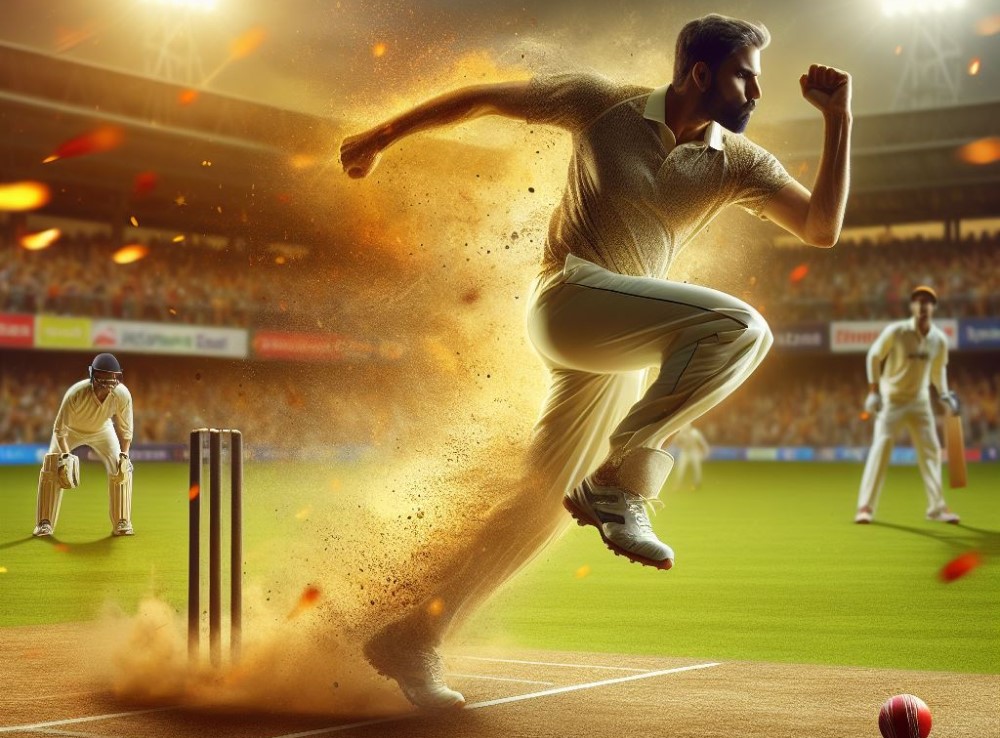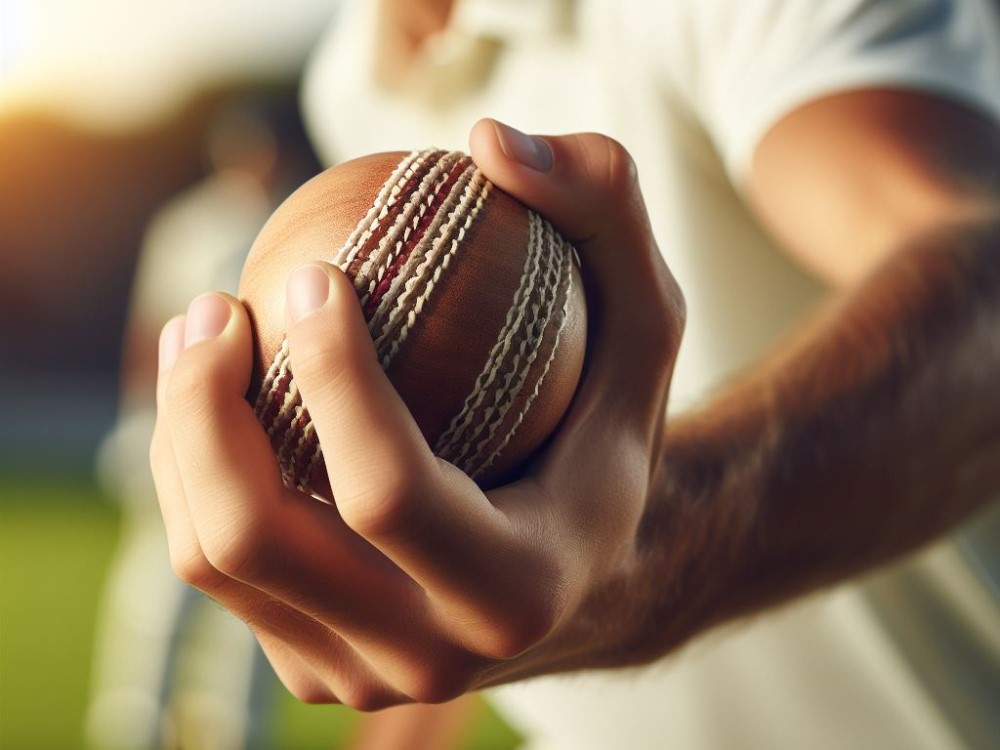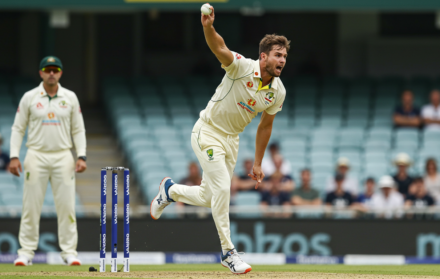
What Are The Top Techniques For Fast Bowling In Cricket
Fast bowling in cricket requires a combination of skill, technique, and physical conditioning. The right techniques can help a fast bowler attain maximum effectiveness and deliver powerful and accurate deliveries. In this article, we will explore the top techniques for fast bowling, focusing on various aspects of the bowling action.
Firstly, the importance of technique in fast bowling cannot be overstated. A study conducted by The British Journal of Sports Medicine emphasizes the crucial role of technique in reducing the risk of injury and optimizing performance.
We will delve into the techniques for grip and wrist position, which are essential for generating speed and controlling the movement of the ball. Understanding how to hold the ball correctly and the importance of maintaining the right wrist position will have a significant impact on the quality of your deliveries.
Another vital element of fast bowling is the run-up and approach. Optimizing the length of your run-up and building momentum during your approach can help generate more power and pace, enhancing the effectiveness of your deliveries.
Bowling action and delivery stride also play a crucial role in fast bowling. We will discuss the optimal bowling action for maximum effectiveness and the importance of the correct delivery stride for maintaining balance and generating power.
We will explore techniques to increase bowling speed and ways to utilize seam position for swing and seam movement. These skills are essential for outsmarting batsmen and taking wickets.
Variations and bowling strategies will also be covered, including techniques for bowling yorkers, bouncers, cutters, and slower balls. These variations add unpredictability and make you a more formidable bowler.
Finally, we will touch upon the importance of physical conditioning and injury prevention for fast bowlers. Incorporating strength and conditioning exercises into your training routine and understanding key aspects of injury prevention can help you maintain peak performance and stay injury-free.
By mastering these top techniques for fast bowling, you can take your cricket game to the next level and become a formidable force on the field.
Importance of Technique in Fast Bowling

In the realm of fast bowling, the significance of technique cannot be overstated. It plays a pivotal role in attaining success on the field while also safeguarding against injuries. Several compelling reasons underscore the importance of technique in this discipline:
- Accuracy: The adoption of proper technique empowers bowlers to consistently hit their intended targets with precision.
- Pace: A well-executed technique enables bowlers to generate maximum velocity, delivering swift balls capable of surprising opponents.
- Safety: Employing the correct technique significantly mitigates the risk of injuries, particularly in crucial areas like the lower back and bowling arm.
- Variation: Mastering diverse techniques enhances a bowler’s repertoire, allowing them to proficiently execute an array of deliveries, including swing, seam, and bouncers.
Fact: The extraordinary triumphs of bowlers like Glenn McGrath demonstrate the paramount significance of technique in fast bowling. Their careers serve as a testament to the immense achievements made possible by flawless technique.
Techniques for Grip and Wrist Position
When it comes to fast bowling in cricket, mastering the techniques for grip and wrist position are crucial for delivering effective and accurate balls. Here are some key considerations to keep in mind:
- Grip: The correct grip is essential for generating power and control. Two variations to consider are the four-seam grip, where the index and middle fingers are placed across the seam, and the two-seam grip, which involves placing the index and middle fingers along one side of the seam.
- Wrist position: A strong and stable wrist position during the release is vital for generating pace and movement. Bowlers often strive to keep their wrists behind the ball during delivery, as it allows for greater control and swing.
- Other factors: In addition to grip and wrist position, factors such as body alignment, run-up technique, and the use of the non-bowling arm also contribute to a successful fast bowling technique.
How to Hold the Ball for Fast Bowling?
- How to Hold the Ball for Fast Bowling? Hold the ball with your dominant hand using a four-finger grip.
- Place your fingertips across the seam, ensuring a firm grip.
- Maintain a relaxed grip to allow flexibility and control.
- Position your thumb on the opposite side of the seam for stability.
- Keep your wrist firm and aligned with your forearm to generate power.
- Practice variations in grip to achieve different types of deliveries.
Properly holding the ball is crucial for executing effective fast bowling techniques and delivering accurate and speedy deliveries.
Importance of Correct Wrist Position
Correct wrist position is of utmost importance for fast bowlers in cricket. It plays a significant role in generating pace, accuracy, and movement in the ball. The wrist should be held in a firm and stable position at the point of release to maintain control and prevent injury.
Proper wrist position allows bowlers to achieve the desired swing and seam movement, enhancing their effectiveness. It helps in generating maximum bowling speed and enables bowlers to execute variations like cutters and slower balls.
Developing and maintaining the correct wrist position is crucial for fast bowlers to excel in the game. The importance of correct wrist position cannot be overstated in the context of bowling.
Run-Up and Approach

Unleash your bowling prowess with some serious speed! In this section, we’ll dive into the essential elements of the run-up and approach in fast bowling. Get ready to optimize your run-up length and build that all-important momentum during your approach.
We’ll explore techniques and insider tips that will take your bowling game to the next level. So lace up your shoes, brace yourself and let’s get ready to dominate the cricket pitch!
Optimizing Run-Up Length
Optimizing the run-up length is crucial for fast bowlers in cricket to generate maximum momentum and bowling speed. Here are key steps to optimize the run-up length:
- Start with a shorter run-up and gradually increase the length based on comfort and effectiveness.
- Focus on maintaining a smooth and balanced approach towards the bowling crease.
- Avoid overstriding or taking too many steps, as it can hamper rhythm and accuracy.
- Experiment with different lengths during practice sessions to determine the ideal run-up for your bowling action.
- Seek feedback from coaches and teammates to assess the effectiveness of your run-up length.
Jasprit Bumrah, the renowned Indian fast bowler, optimized his run-up length through consistent practice and experimentation. By gradually lengthening his run-up, he enhanced his bowling speed and accuracy, becoming one of the most potent pace bowlers in the world.
Building Momentum during Approach
- When it comes to fast bowling in cricket, building momentum during the approach is crucial for generating power and speed.
- Here are some steps to help bowlers enhance their momentum during the approach:
- Start with a balanced stance, ensuring your body weight is evenly distributed.
- Take long strides during the run-up to cover more ground and increase your momentum.
- Maintain a smooth and fluid arm and leg action to generate a seamless flow of energy.
- Focus on driving off the front foot as you approach the crease, transferring your body weight forward.
- Ensure a strong follow-through, extending your bowling arm fully and using your non-bowling arm for balance.
- By following these steps, bowlers can effectively build momentum during the approach, leading to more powerful and faster deliveries on the cricket field. Good luck on improving your fast bowling skills!
Bowling Action and Delivery Stride

Mastering the art of fast bowling in cricket requires a meticulous understanding of bowling action and delivery stride. In this section, we will unravel the secrets behind an optimal bowling action for maximum effectiveness. We will delve into the significance of a correct delivery stride, uncovering its impact on a bowler’s precision and overall performance. So, let’s dive deep into the mechanics that contribute to becoming a formidable force on the cricket pitch.
Optimal Bowling Action for Maximum Effectiveness
To achieve maximum effectiveness in fast bowling, it is crucial to have an optimal bowling action. Here are the key steps to ensure a proper bowling action:
- Maintain a balanced and athletic stance at the start of the delivery stride.
- Follow a smooth and controlled run-up, building momentum with each step.
- Keep your non-bowling arm relaxed and in a natural position throughout the delivery.
- Leverage your upper body and core strength to generate power and maintain a stable body position.
- At the point of release, bring your front arm down and across your body, creating a slingshot effect.
Fact: Did you know that the optimal bowling action not only maximizes speed but also helps in generating swing and seam movement? This can create additional challenges for batsmen and increase the effectiveness of your deliveries.
Importance of Correct Delivery Stride
- Importance: The importance of a correct delivery stride cannot be overstated for fast bowlers in cricket as it forms the foundation for an effective and efficient bowling action.
- Correct delivery stride: To fully understand the importance, here are some key steps to consider:
- Alignment: Proper alignment of the body towards the target is crucial.
- Stride length: To generate maximum power and maintain balance, finding the optimal stride length is essential. It should neither be too short nor too long.
- Timing: Achieving synchronization and rhythm requires coordinating the delivery stride with the approach and arm action.
- Land with stability: A stable and balanced landing on the front foot allows for a smooth transfer of energy from the run-up.
- Body position: Maintaining an upright posture and balanced body position at the point of delivery maximizes accuracy and control.
- Follow-through: A strong and controlled follow-through at the end of the delivery stride helps maintain momentum and balance.
By focusing on these aspects of the delivery stride, fast bowlers can enhance their effectiveness and minimize the risk of injury.
Bowling Speed and Seam Position
When it comes to fast bowling in cricket, the key lies in the bowling speed and seam position. In this section, we’ll uncover the secrets behind generating more bowling speed and explore how to utilize seam position for swing and seam movement.
Get ready to dive into the techniques and strategies that can take your bowling game to the next level. So grab your gear and let’s unleash the power behind each delivery!
Techniques to Generate More Bowling Speed

To increase bowling speed in cricket, fast bowlers can employ a range of techniques and strategies. Here are some steps to follow:
- Focus on a powerful run-up: Concentrate on achieving a fast and explosive run-up, which can generate momentum and result in enhanced bowling speed.
- Work on strengthening the core and lower body muscles: Developing strong muscles in the core and lower body can provide the necessary power and stability required for generating speed.
- Develop a smooth and efficient bowling action: By executing a well-defined and fluid bowling action, bowlers can optimize energy transfer and consequently increase their bowling speed.
- Improve flexibility and agility: Enhancing flexibility allows for a longer stride and aids in achieving better body alignment, ultimately leading to faster bowling.
- Utilize proper wrist position: Maintaining a strong and stable wrist position during the delivery can significantly contribute to generating more power.
By incorporating these techniques into training and practice sessions, fast bowlers can effectively enhance their bowling speed.
Utilizing Seam Position for Swing and Seam Movement
To maximize swing and seam movement in fast bowling, it is crucial to utilize seam position effectively. Here are some steps to achieve this: Hold the ball with your fingers along the seam, ensuring a firm grip. Keep your wrist aligned with the seam, allowing it to stay upright during the delivery stride. Concentrate on maintaining a consistent seam position throughout the delivery. Vary the angle of your wrist slightly to influence the direction of swing. Focus on landing the ball on the seam to generate seam movement off the pitch. By effectively utilizing seam position for swing and seam movement, fast bowlers can enhance their ability to create swing and seam movement, making them more effective and challenging for batsmen to face.
Variations and Bowling Strategies
Discover the key to becoming a formidable cricket bowler by exploring the art of variations and bowling strategies. We’ll delve into two crucial sub-sections: mastering the art of bowling yorkers and bouncers, and utilizing cutters and slower balls.
Unleash your potential on the pitch as we uncover the secrets behind these techniques, backed by solid facts and expert advice. Get ready to revolutionize your bowling game and leave batsmen bewildered.
Bowling Yorkers and Bouncers
Bowling Yorkers and Bouncers are two vital techniques in fast bowling that can profoundly confuse and challenge the batsman. Bowlers like Jasprit Bumrah and Mitchell Starc are renowned for their lethal Yorkers, which are deliveries that pitch right at the batsman’s feet, making it extremely challenging to connect with the ball.
Similarly, bowlers such as Jofra Archer and Pat Cummins excel at bowling accurately-directed Bouncers, which are short-pitched deliveries that aim to surprise the batsman with extra bounce.
To become proficient in these techniques, bowlers must prioritize accuracy, maintain a consistent length, and vary the pace of their deliveries. Extensive practice is key to developing control and precision in executing these deliveries.
Adding Yorkers and Bouncers to your bowling repertoire can transform you into a formidable fast bowler.
Using Cutters and Slower Balls
Using cutters and slower balls can be a valuable addition to a fast bowler’s arsenal in cricket. Here are some steps to master these techniques:
- Master the grip: Hold the ball with the index and middle finger on top of the seam, and the thumb underneath for cutters.
- Vary the release: For cutters, slightly twist the wrist to create sidespin. For slower balls, release the ball with a gentle flick of the fingers.
- Change the pace: Adjust your run-up and approach to decrease the speed of the delivery for slower balls.
- Focus on precision: Aim to hit the pitch in different areas to deceive the batsman when using cutters, or to disrupt their timing with slower balls.
- Mix it up strategically: Use cutters and slower balls as surprise variations in between faster deliveries to keep the batsman guessing.
Incorporating the techniques of using cutters and slower balls can make you a more unpredictable and effective fast bowler. Experiment with different grips, releases, and lengths to find what works best for you. Remember, practice and mastering these variations will give you an edge on the cricket field.
Physical Conditioning and Injury Prevention
Fast bowlers in cricket face unique challenges that require them to be in prime physical condition while also preventing potential injuries. In this section, we’ll explore the crucial aspects of physical conditioning and injury prevention for fast bowlers.
Discover the strength and conditioning exercises that can enhance their speed and power on the pitch. Learn about the key factors in injury prevention, ensuring that fast bowlers stay fit and ready to deliver their best performance. Let’s dive into the world of physical preparation for elite fast bowling.
Strength and Conditioning Exercises for Fast Bowlers
To enhance their performance and prevent injuries, fast bowlers in cricket need to focus on these strength and conditioning exercises. These exercises help improve their overall physical fitness and build the power and stamina required for fast bowling. Here are some key exercises for fast bowlers:
- Squats: Strengthen the legs and core for better stability and power.
- Lunges: Improve leg strength and balance, essential for an explosive delivery stride.
- Deadlifts: Develop lower body strength, particularly in the hips and posterior chain.
- Shoulder Press: Build upper body strength and stability to handle the repetitive bowling action.
- Core exercises: Planks, Russian twists, and medicine ball throws improve core strength for better balance and control.
- Plyometrics: Drills like box jumps and bounding help boost explosiveness and improve muscle power.
Incorporating these strength and conditioning exercises for fast bowlers into their training regimen can significantly enhance a fast bowler’s performance on the field.
Key Aspects of Injury Prevention for Fast Bowlers
- Warm-up: Prioritize a thorough warm-up routine to prepare muscles and joints for the demands of fast bowling.
- Proper technique: Focus on maintaining good body alignment, avoiding excessive stress on vulnerable areas like the back and shoulder.
- Strength training: Incorporate exercises that target muscles used in fast bowling, such as the core, legs, and upper body.
- Flexibility and mobility: Stretch regularly to improve range of motion and prevent muscle imbalances that can lead to injuries.
- Rest and recovery: Allow adequate time for rest and recovery between bowling sessions to avoid overuse injuries.
- Listen to your body: Pay attention to any pain or discomfort and seek medical advice promptly to prevent minor issues from becoming major problems.
To minimize the risk of injuries, fast bowlers should adopt key aspects of injury prevention for fast bowlers that include proper warm-up, technique, strength training, flexibility, rest, and attentive self-care.
With these key aspects in mind, fast bowlers can enjoy a long and successful career without the setback of avoidable injuries.





